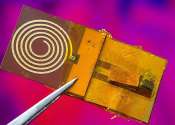New interferometry technique could improve GPS
A new scientific technique could significantly improve the reference frames that millions of people rely upon each day when using GPS navigation services, according to a recently published article in Radio Science.
Nov 8, 2023
0
39









